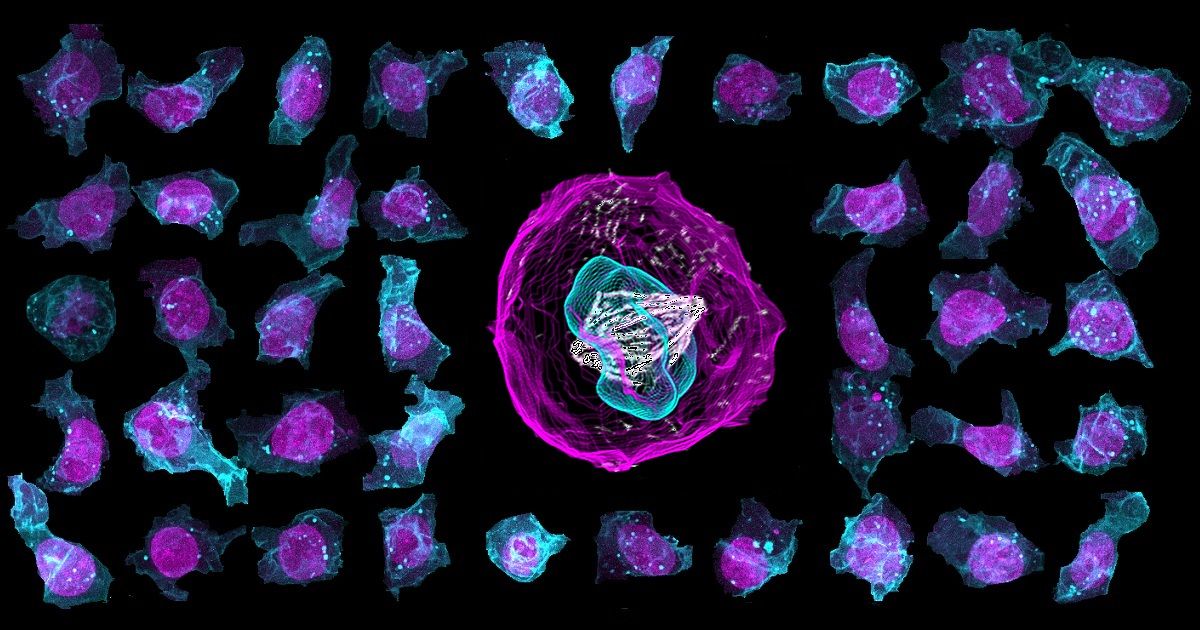There’s good cell death and then there’s the bad kind.
Programmed cell death goes haywire and causes cancer and many inflammation-related diseases, such as arthritis, atherosclerosis, and diabetes.



Second article (#2 of 3) in three part stem cell series.
Summary: Stem cell decline leads to disease, gradual organ failure, and death. Learn what causes it and how researchers are trying to reverse stem cell decline. Part one of a two-part series.
Are stem cells the fountain of youth?
Recent discoveries suggest that stem cells may be able to regenerate most of our organs in the near future. Using regenerative medicine, death and disability from organ failure will soon be a relic of the past. Gone too will be the failures associated with organ transplantation. Using stem cell therapy, our declining immune systems will be restored, no longer compromised by old age. Finally, stem cells can minimize the dysfunction and mortality associated with infectious diseases.

First article (#1 of 3) in three part stem cell series.
Summary: A brief tutorial on the science behind stem cell therapy.
Doctors already use stem cells to treat blood diseases, a cell-based therapy that has saved the lives of thousands of children with leukemia. Additionally, physicians used stem cells to successfully treat some types of bone, skin, and eye injuries and diseases. The potential of stem cell therapies is enormous, and some researchers feel that we will be able to regrow organs in the near future.
Our Natural Stem Cells
Stem cells replenish damaged tissues and serve as an internal repair system of our bodies. Stem cells have the remarkable ability to develop into many different cell types in the body. They divide without limit to replenish other cells and repair damaged tissue.

Cellular Garb-aging is the build-up of junk inside the cells that naturally occurs during aging. This article says why it happens.
To maintain protein homeostasis, and prevent garb-aging, the cell uses molecular chaperones, which help assemble and disassemble proteins. Chaperonins are a special class of chaperones that provide favorable conditions for the correct folding of other proteins, thus preventing aggregation. Chaperonins prevent the misfolding of proteins, which prevents conditions such as Mad Cow Disease. Sometimes, chaperonin proteins may also tag misfolded proteins to be degraded. When properly tagged, other processes can recognize the damaged or misfolded proteins and ‘take out the trash.’
Think of it as garb-aging removal.
Aging Leads to Cellular Garb-Aging
Unfortunately, advancing age brings about the decline of the molecular chaperones that aid in the folding process. To add insult to injury, we also experience a decrease in the other quality control process that help clear misfolded and damaged proteins from our cells. Our garb-aging removal processes fall to the wayside. Garb-aging takes its place.

Researchers have discovered why inflammaging occurs and are working on new treatments. Inflammaging is new medical term for “the chronic inflammation brought on by old age.”
Summary: Inflammaging is a low-grade inflammation brought on by old age. It accelerates the aging process and worsens diseases like cancer and heart disease. Because inflammaging accelerates aging, geroscientists are perfecting a few cures for the condition.
As we age, most of us tend to develop a low-grade chronic inflammation that causes disease and damage throughout the body. Because this low-level inflammation typically accompanies aging, scientists have nicknamed it ‘inflammaging.’ Most geroscientists implicate inflammaging as the cause of many of age-related diseases including diabetes, heart disease, cancer, and dementia. These chronic diseases accelerate aging and shorten our lives.
There is good news, however. Geroscientists feel that reducing inflammaging will eliminate or reduce these diseases. In fact, these anti-aging scientists have developed several potential remedies to solve the problem.

Does an out of whack microbiome cause inflammaging?
Does our microbiome cause inflammaging, the low-level chronic inflammation that plagues our bodies as we get older? A new research paper examines the question, and their findings just might surprise you.
Many people still regard bacteria and other microorganisms as mere disease-causing germs. However, it’s a lot more complicated than that. In fact, it has become increasingly clear that a healthy human body is teeming with microbes, which play a role in our immune system. We are not just an organism; we are a super-organism and the millions of microbes both within and without our bodies.
The Microbiome and Inflammaging
Geroscientists are starting to realize that the human microbiome, the colony of bacteria in our gut, Several studies have shown that our microbiome changes as we age, and this could negatively impact our health.

ellagic acid, lignans, flavonoids, glucosinolates, curcumin, resveratrol and other bioactive compounds – are natural substances found in plants. Research has shown that these natural compounds help to prevent stroke, cancer, type 2 diabetes, heart disease, and premature death.
What Are Phytonutrients?
Whole plants contain thousands of natural compounds, called phytonutrients and phytochemicals. Deriving their name from phyto, the Greek word for plant, the terms are used interchangeably used to describe the health-promoting compounds found in all whole plants. While plants produce these chemicals to protect themselves from insects, germs, and fungi. Along with fiber, phytonutrients in our diet are the reason that fruits and vegetables help to prevent chronic diseases like cancer, stroke, heart disease, and premature death.

(Medical Xpress)—A team of researchers with Kyoto University and Kagawa University, both in Japan, has cured renal anemia in mice by injecting them with treated human stem cells. In their paper published in Science Translational Medicine, the group describes their approach and how well it worked.
Chronic kidney disease is a serious ailment resulting in a host of symptoms due to the body’s reduced ability to process waste and fluids—many patients eventually experience renal failure, which requires them to undergo routine dialysis or a kidney transplant. Less well known is that people with chronic kidney disease also suffer from renal anemia because the kidneys manufacture the hormone erythropoietin (EPO), which causes the body to produce red blood cells without which the blood cannot carry enough oxygen to the brain and other body parts. The current treatment for renal anemia is injections of EPO every few days, which, for many people, is impractical because of the cost and side effects. In this new effort, the researchers have found a possible new treatment—injecting treated stem cells directly into the kidneys.
In their experiments, the researchers collected stem cells from human cord blood (from the umbilical cord) and then treated them with growth factors that changed them to pluripotent stem cells that grew into mature cells capable of producing EPO. The team then injected the treated cells into the kidneys of mice suffering from renal anemia and monitored them for the rest of their lives.

Your mindset matters — now more than ever.
We are in the midst of a drug epidemic.
The drug? Negative news. The drug pushers? The media.
As I wrote in Abundance: The Future Is Better Than You Think, we pay 10x more attention to negative news than positive news.
We are being barraged with negative news on every device. This constant onslaught distorts your perspective on the future and inhibits your ability to make a positive impact.